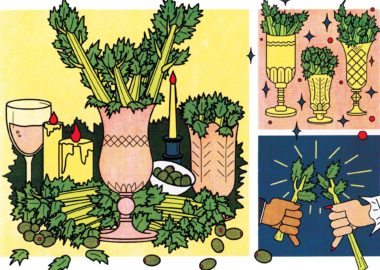
There used to be a very distinct line between a social platform and a publisher. Social media channels like Twitter provided users with a platform to promote their own content – simple. However, in the last year, the line between platform and publisher has begun to quickly blur and a large part of this evolution is due to the quest for monetization. There are plenty of examples of similar transitions from other major digital players. Think about Vimeo’s original content, Medium’s new publishing api, and Google’s AMP project. For social media, though, there’s been rapid progression by major players over the last year. Here’s a timeline, by platform, about how social media sites are changing their priorities – and what it means for the rest of us.
Facebook, October 2014
A year ago, news broke that Facebook is planning to become a publishing platform for brands and publications. Rather than posting a link on Facebook that takes readers to a website, the new model will keep users in the Facebook environment by hosting the full content – thereby giving the social platform more data, control, advertising power and essential ownership of said content. Though publications like the New York Times have reportedly signed on, most publishing experts were wary of the change, to say the least.
Attention publishers: If you obey Facebook here & make your mobile content live within their platform, you are DUMB. http://t.co/h9VCVW1l5b
— Anil Dash (@anildash) October 27, 2014
Monetization of such content will, of course, be shared between the publisher and Facebook. However, Facebook isn’t the only social platform to open up to this sort of shared revenue model.
Snapchat, January 2015
In January, Snapchat launched its Discover function, which features platform-specific content from top publishing brands – like Vice, National Geographic, Buzzfeed and the Food Network. Brands, publishers and celebrities are welcome to create their own basic Snapchat accounts, but only these select publishers have the opportunity to directly monetize their content (and share that monetization with Snapchat). Then came Live events, which provide users with live video coverage of sports, award shows, festivals and more. A recent tweak to the Snapchat interface added Discover & Live icons onto the app’s main page, where users spend the majority of their time, giving the content greater visibility.
The Snapchat redesign, explained pic.twitter.com/fvSktQ8VUf — Casey Newton (@CaseyNewton) July 13, 2015
Twitter, October 2015
And just last week, as Twitter founder Jack Dorsey was formally renamed CEO, news came that Twitter too is considering long-form publishing – so much so that they’ve even stated the 140 character limit may cease to exist. Then days later, the company announced Twitter Moments – a new feature that provides collections of tweets on certain top stories, curated by a team at Twitter NYC. Partners for the new feature include Buzzfeed, Mashable and the New York Times. Sound a little like Snapchat’s Live feature? Sound a little like what Facebook’s planning?
New! Find the best of Twitter in an instant with Moments: https://t.co/QAKGUSVBbTpic.twitter.com/KAjfkysVKC — Twitter (@twitter) October 6, 2015
As these changes roll out, it’s important to remember that the new models benefit only a few organizations – namely, the Buzzfeeds and Condé Nasts of the world. For the average brand or publisher, use of social media won’t change. What will change, however, is competition. It’s easier for users to check out Twitter’s curated stories than to seek out other publications. It’s simpler to enjoy the Discover stories on Snapchat than to search for other accounts. And on Facebook? It’s easier to read a story as you scroll through your newsfeed of engagements, cats and political memes than to click away. Competition and discoverability are the hurdles as social publishing evolves. For this reason and for all of us, telling quality stories and building engaged audiences is more important than ever.





